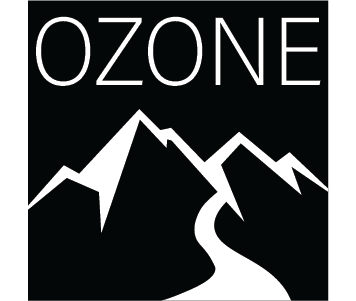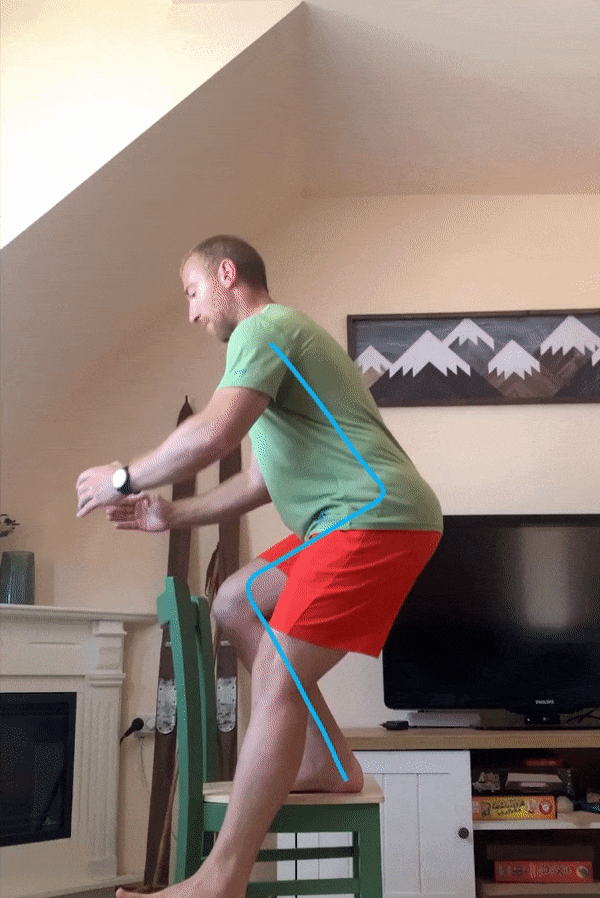Training session under a magnifying glass - 11/3
- Miklós Ozsváth
- Nov 15, 2022
- 5 min read
Updated: Aug 2, 2024
It's hard to imagine without an experience how the workouts work together in the OzoneSki Fit program. Let's look at some training session and go over how the exercise groups targeting different areas are built on each other. Now, as an example, the 11/3 workout is presented.
By the last third of the training program, we should already know the basic movements, so here we may encounter increasingly complex or dynamic exercises. There are four exercises in each training session, which are performed in three series, so each movement is usually practiced 30 times.
The four exercises in this training session target the following areas
Posterior Kinetic Chain (PCH9)
Stabilizing the pelvis against rotation and tilt (HS8)
Hip flexors and pelvic stability (ACH13)
Leg strength development, pelvic stability, and mobility (SQ11)
PCH9 - Leg Curls Into Bridge with Slipping Pads
Posterior chain helps to maintain the central position while skiing and to attack the front of the ski. In the everyday life, a healthy spine requires the work of these muscles. The glutes are needed for a stabile turn in skiing. In the everyday life, they set the correct angle of the pelvis (prevention of lower back pain) and provide knee stability (prevention of arthrosis). térdhajlítók a sílécThe hamstrings are the most important muscles for ski control and for the forward position. At the same time, they can protect the knee most effectively.
In terms of operation, the bridge works like a plank, only it acts on the posterior side of your body.
We often use these exercises statically, because the objective of the core muscles is to keep our body stable for almost any length of time. They should prepare for persistent work, not fast.
In the bridge, the glutes, and the muscles near the spine keep our body weight.
PCH9 brings the bridge into a complex form by pulling your heel under you with knee flexion. The muscles near the spine and the glutes must remain in static work, while the hamstrings must achieve movement in the knee.
The most common mistake is that as the knee begins to bend, the glutes relax and the pelvis (your hips) sinks.
HS8 - Lateral Ball Wall Single-Leg (Outside) Squats
The pelvis connects your legs to your body with a ball joint (the hip joint) and long leverage (the femur). The femur and pelvis can and will move in any direction if we don't learn to fix them in a proper way.

If we find support on one leg – e.g. skiing, walking, running, etc. – the pelvis tilts to the side but also twists in relation to the thigh, and we can even move forward or backward.
This can happen at every turn, while such minor or major unstable movements of the pelvis and femur do not become aware. We only notice that the turn has become a bit unstable, or we are drifting or tipping over.
This complex exercise challenges our pelvis and supporting leg, and with each knee flex, we must find the proper muscle activity that helps with stability. From the point of view of skiing, this exercise puts the load on the outer ski.
We will feel that from repetition to repetition we find more or less stable support, which is why we are constantly looking for the best variation in how our muscles cooperate. This experimentation gives the nervous system a lot of experience, and this will eventually help us find the combination that suits us best.
ACH13 - Kneeling into Split Kneeling
The pelvis must be stabilized not only of the supporting leg's side, but the hip flexors on the other side must also be flexible and mobile for a healthy hip joint and pelvis.

There are tasks that are physically easier but require serious attention and precision, they are challenging the mind: lifting the knee into split kneeling is one of them.
Kneeling on the book, the pelvis is clearly higher on the side of the support leg. For the other leg to "fit", the pelvis must first be raised horizontally, in the same way as it is stabilized before the edge change while skiing. With this phase, we can develop the cooperation of the glutes and the core muscles on the support side.
Stabilization should always be done before action or loading, and that's how it's done here. When the support side is stabilized, we start to lift the knee on the other side forward with the hip flexors. In skiing, it is equally important to perform individual movements in the exact order and time. The difference is that here we have a chance to pay attention to the details, but there is no chance to learn this while skiing.
During the raising of the knee, the heel must also be pulled back with the hamstrings, otherwise, the foot will not fit above the ground. In this way, we learn to activate the hip flexors and the knee flexors at the same time. These movements can help a lot during the transition while skiing but also serve to develop hip joint mobility at the same time.
This looks like a simple exercise only on the surface, but in reality, it is overly complex (it is no coincidence that it appears at the end of the training program). We prepare it with several, simpler exercises in the previous training sessions, and then finally we will find the final use in the real world while skiing.
SQ11 - Single-Leg Box Squats
Single-leg squats are mostly considered a tool for strength training. This is partly true, but it is even more important in terms of the complex stabilizing the pelvis, legs, and torso.
In the previous exercises, we have already seen that it is not easy to stabilize a pelvis if the load is asymmetrical. In the one-legged squat, this happens in an even more extreme way since the entire body weight is loaded on one side of the pelvis.
The situation is further complicated by the fact that, while standing, the hip joint and the knee are more or less in the line with the support (the lower leg and thigh are almost vertical), while squatting, the knee moves increasingly forward, so that the lower leg and the femur will twist the whole body like two leverages. Every inaccuracy or improperly fixed joint increases the mistakes, which we experience as a loss of stability.
Actually, it is often not that our thighs are weak for one-legged squats, but rather that the stabilizing muscles of the hip and ankle joints are not prepared for this challenge. These are rather smaller muscle groups. They are characterized by the fact that if their strength is exceeded by the load, larger, other – stronger – muscles try to solve the excessive task instead. This is how compensatory movements are created, which can cause errors and injuries.
Therefore, in the case of exercises such as the one-legged squat, it is especially important to prepare with simpler, easier positions.
At the same time, if performed correctly, it is a highly effective tool for developing stability.









Comments